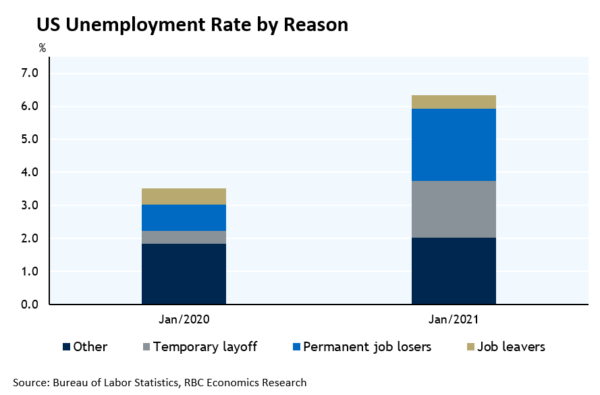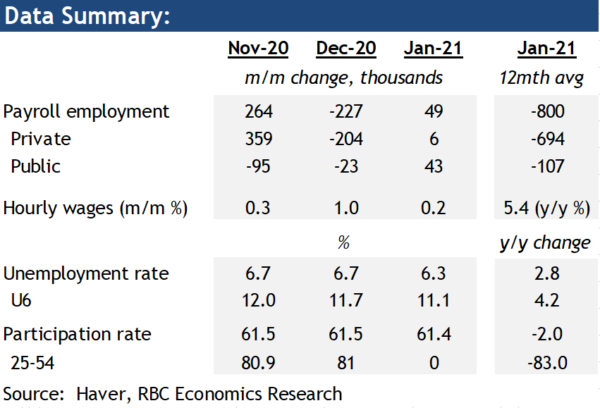- Non-farm payroll employment rose 49k; weakness again concentrated in the hospitality sector
- The unemployment rate dipped lower to 6.3%; labour force participation held steady
- Household income to rise in January, alongside savings rate
US payroll employment grew 49k at the turn of the year, despite further job losses in high-contact services industries with the threat of virus spread and containment measures keeping households closer to home. Leisure and hospitality (-61k) and retail (-38k) employment both fell in the month. But other industries outside the hospitality sector posted gains, on balance, led by professional and business services (+97).
The unemployment rate dropped lower to 6.3%, while the labour force participation rate held steady. Among the unemployed, the number of workers on temporary layoff fell to 2.7 million in January while the number of workers on permanent layoff was relatively unchanged at 3.5 million. This compares to 640k and 1.3 million, a year earlier.
Household income likely grew sharply in January, boosted by still-improving labour markets as a whole and government income support programs. Among the private-sector industries, a 0.5% tick higher in total hours worked, together with a 0.2% increase in average hourly earnings left total compensation higher than in December. On top of that, another round of ‘one-time’ stimulus checks and boosted unemployment insurance payments (as part of the $900 billion support package passed earlier this year) would also have further added to household incomes.
Near and medium-term outlook appears to be increasingly positive. More contained virus spread should allow for some easing in restrictions in the near-term. Rapidly progressing vaccine distribution tees up for a more sustained reopening over the spring and summer, contingent on those shots remaining effective against new emerging variants. That should all lead to an acceleration in both GDP growth and employment gains later this year.














